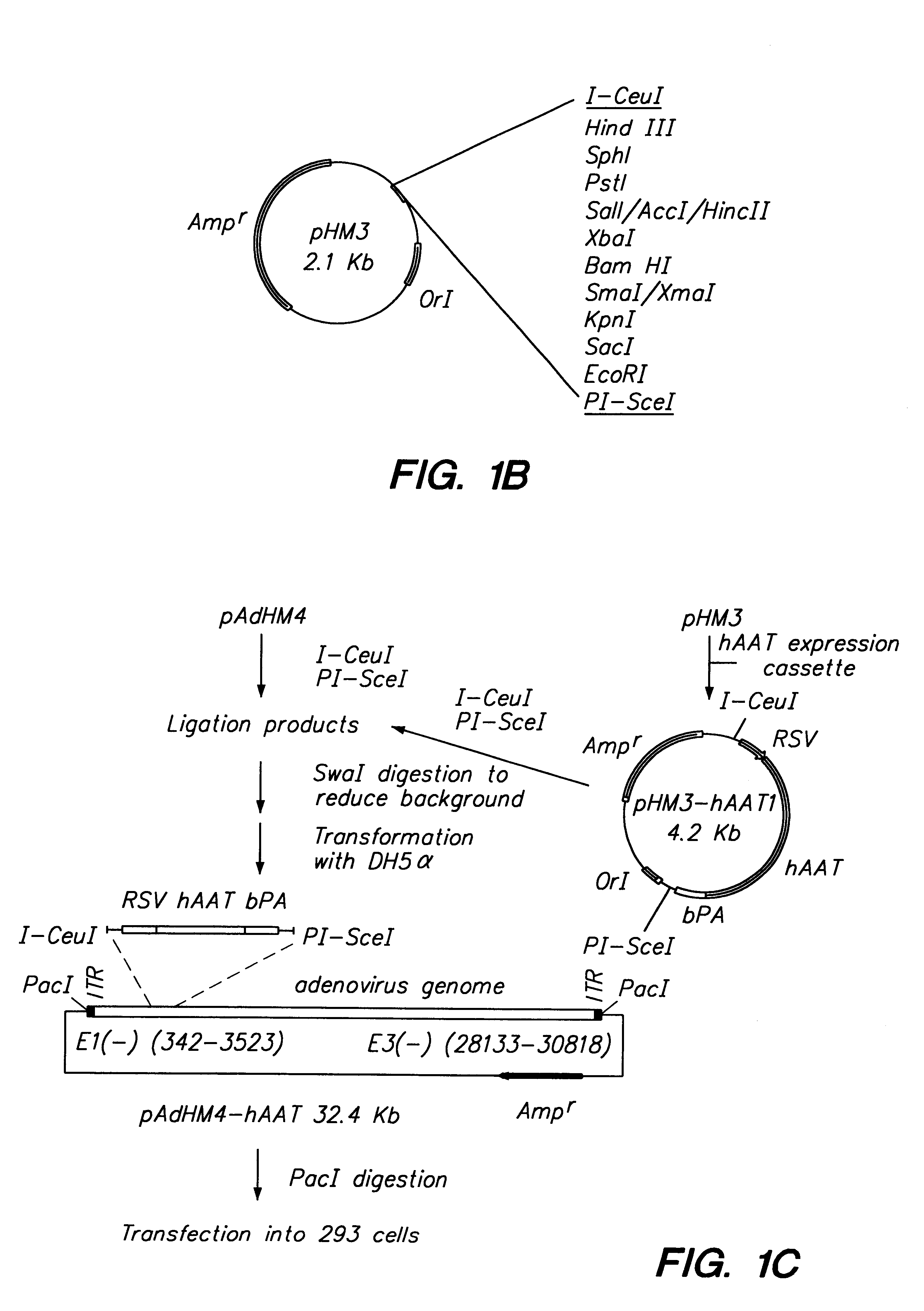Adenoviral vector and methods for making and using the same
- Summary
- Abstract
- Description
- Claims
- Application Information
AI Technical Summary
Problems solved by technology
Method used
Image
Examples
Embodiment Construction
In vitro methods for making a recombinant adenovirus genome, as well as kits for practicing the same and the recombinant adenovirus vectors produced thereby, are provided. In the subject methods, the subject genomes are prepared from first and second vectors. The first vector includes an adenoviral genome having an E region deletion and three different, non-adenoviral restriction endonuclease sites located in the E region. The second vector is a shuttle vector and includes an insertion nucleic acid flanked by two of the three different non-adenoviral restriction endonuclease sites present in the first vector. Cleavage products are prepared from the first and second vectors using the appropriate restriction endonucleases. The resultant cleavage products are then ligated to produce the subject recombinant adenovirus genome. The subject adenoviral genomes find use in a variety of applications, including th e production of recombinant adenoviral vectors for use in a variety of applicati...
PUM
| Property | Measurement | Unit |
|---|---|---|
| Digital information | aaaaa | aaaaa |
Abstract
Description
Claims
Application Information
 Login to View More
Login to View More - R&D
- Intellectual Property
- Life Sciences
- Materials
- Tech Scout
- Unparalleled Data Quality
- Higher Quality Content
- 60% Fewer Hallucinations
Browse by: Latest US Patents, China's latest patents, Technical Efficacy Thesaurus, Application Domain, Technology Topic, Popular Technical Reports.
© 2025 PatSnap. All rights reserved.Legal|Privacy policy|Modern Slavery Act Transparency Statement|Sitemap|About US| Contact US: help@patsnap.com


